From coastal walks to quaint fishing villages and traditional seaside piers, the UK coastline has something for everyone. However, in the colder winter months when the crowds depart, it's the beaches that have a particularly special allure. Often windblown and oozing with atmosphere, you may even find that you have the entire place to yourself.
According to the Ordnance Survey, the coastline of Britain is approximately 11,073 miles in length, so there is no shortage of beaches to discover. Here, we reveal a few of our favourites.
Wrap up warm, pack a flask for a hot drink, and head to the coast for a bracing winter walk with our guide to the best beaches to visit in the UK in winter.
Best winter beaches in England
Cuckmere Haven, East Sussex
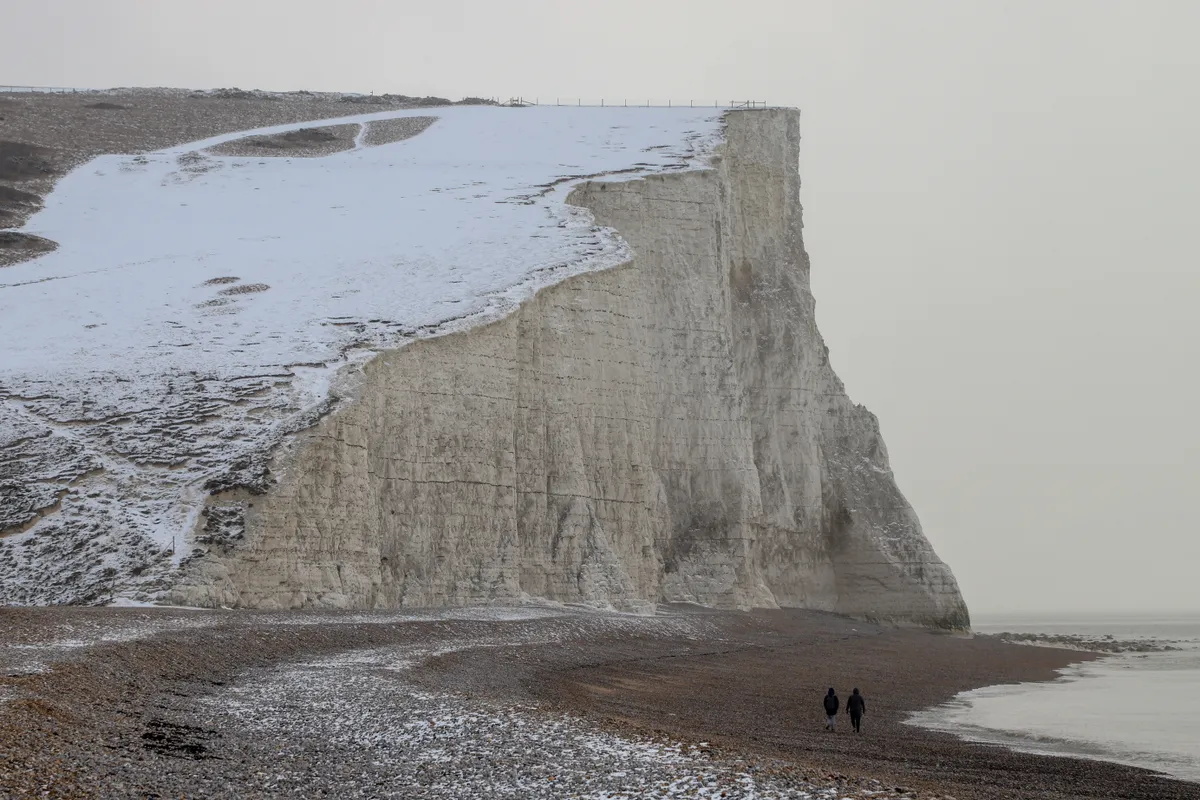
If you’re visiting Brighton or Eastbourne, a winter walk along Cuckmere Have beach and through Seven Sisters Country Park is a must.
Here, brisk sea breezes refresh your mind, rippling dazzling-white chalk cliffs test your cardio fitness and amazing beach and ocean vistas provide the ultimate setting for an open-air yoga session.
Starting from Seaford train station, head east past the pebble beach, oxbow lakes and vibrant, brackish marshes of Cuckmere Haven beach (mouth of the River Cuckmere), and on to your first climb, Haven Brow. On a serene winter’s day, the views across the bay are spectacular.
Speeton Sands, Yorkshire

There is nothing quite like a bracing stride besides a north-east shore to blow away those winter blues. Speeton Sands offer dead-flat walking along an impressive stretch of the Yorkshire coast, where the sandstone of Filey Brigg gives way to the towering chalk cliffs of Bempton, some of the highest on the east coast of England.
This is a fascinating stretch of coastline and, while the geological transition is interesting, there is also much to discover from more recent human history. It is always wise to plan your visit either side of low tide, but there are opportunities to join or leave the beach at Filey, Hunmanby Gap and Reighton Gap.
Anderby Creek Beach, Lincolnshire
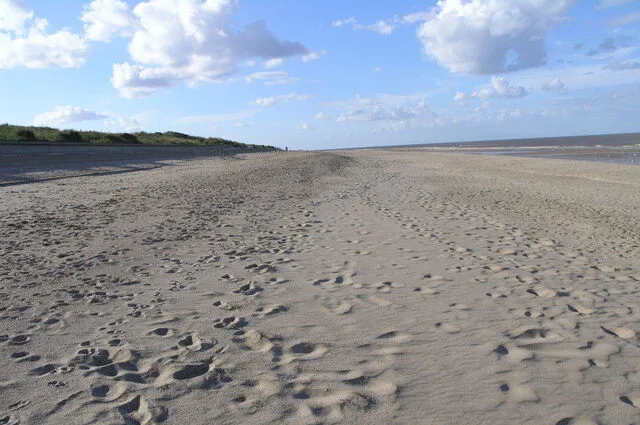
The wild sands of the Lincolnshire coast exude their own special appeal winter as that bracing sea air blows away seasonal excesses. Although it is true, no matter what time of year you visit, this stretch of coastline leaves you feeling a little more alive when you leave is sandy shores than when you arrived.
Anderby Creek Beach, a long, sandy spot backed by dunes between Skegness and Mablethorpe, is vast, yet remains tranquil and unspoilt. It is the kind of place that may remind you of childhood beach visits as you stride out for miles along the sand.
Hauxley Bay, Northumberland
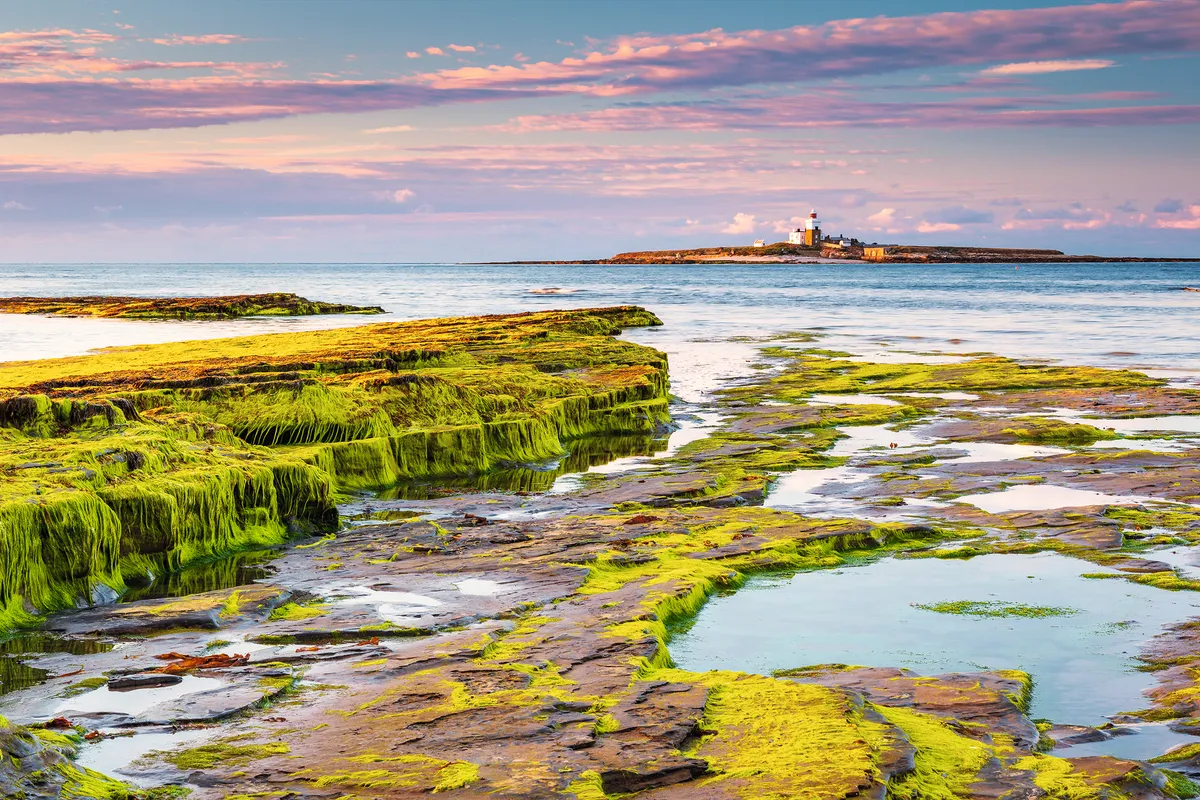
When wintry Scandinavian winds blast across the North Sea, Hauxley Beach can be bleak indeed, with nearby Coquet Island a ghostly suggestion through the spray. Waves churn the sand, uncovering 8,000-year-old remains of trees that flourished in the Doggerland forest that once linked Britain with Europe.
Loe Bar, Cornwall

Cornwall’s largest natural lake runs deep with history and legend, but it’s the diversity of the trails that trace the banks of The Loe and the richness of its wildlife that make it such a special place in winter. At its south-west extremity, The Loe is separated from the shipwreck-strewn Celtic Sea by Loe Bar, a sand bar and slither of surf-stroked beach.
Horsey, Norfolk
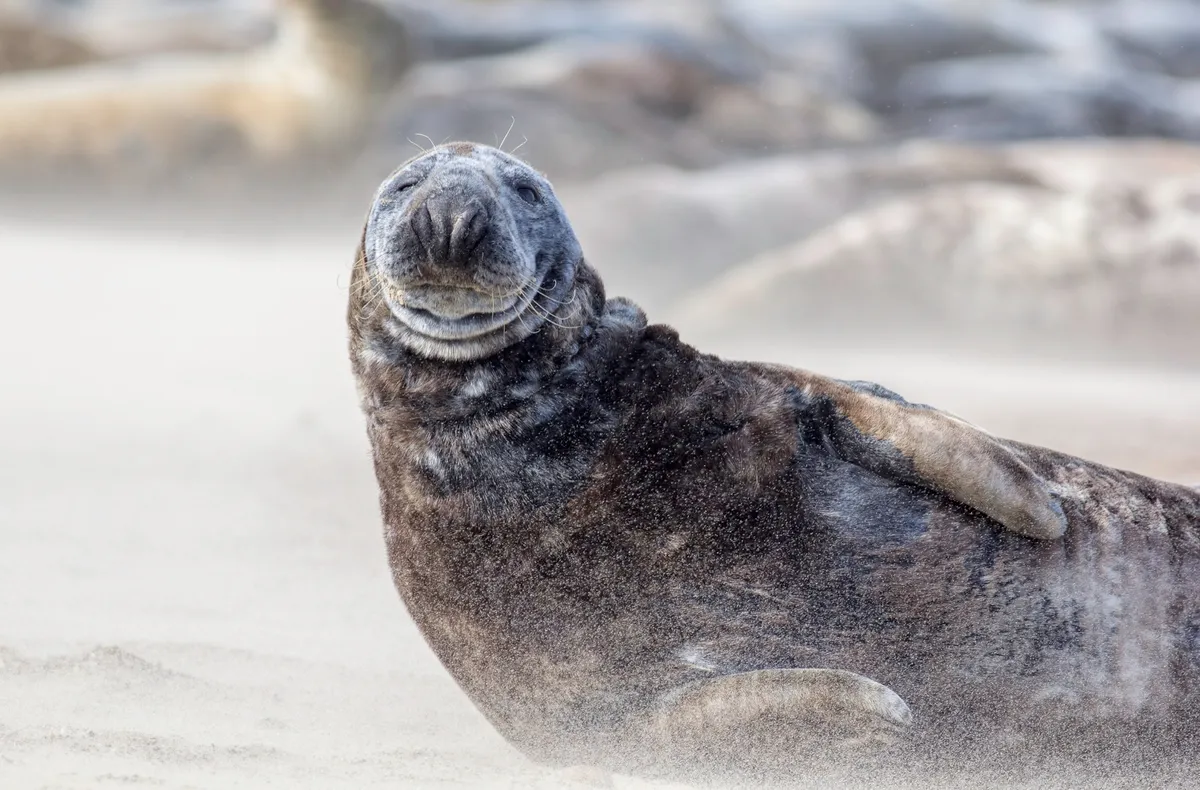
Horsey’s pale sands and huge skies are evocative at any time of year. But as winter storms roll in and colour leaches from the landscape, this otherwise desolate stretch of the Norfolk coast comes alive with hundreds of breeding grey seals.
Visit the beach on a 6.3-mile loop walk around the village of Horsey in the north-east of the Norfolk Broads National Park. The path runs alongside the North Sea and then inland through wildlife-rich marshland, before returning to the village pub.
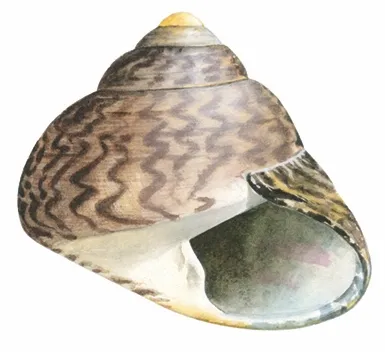
Robin Hoods Bay, Yorkshire
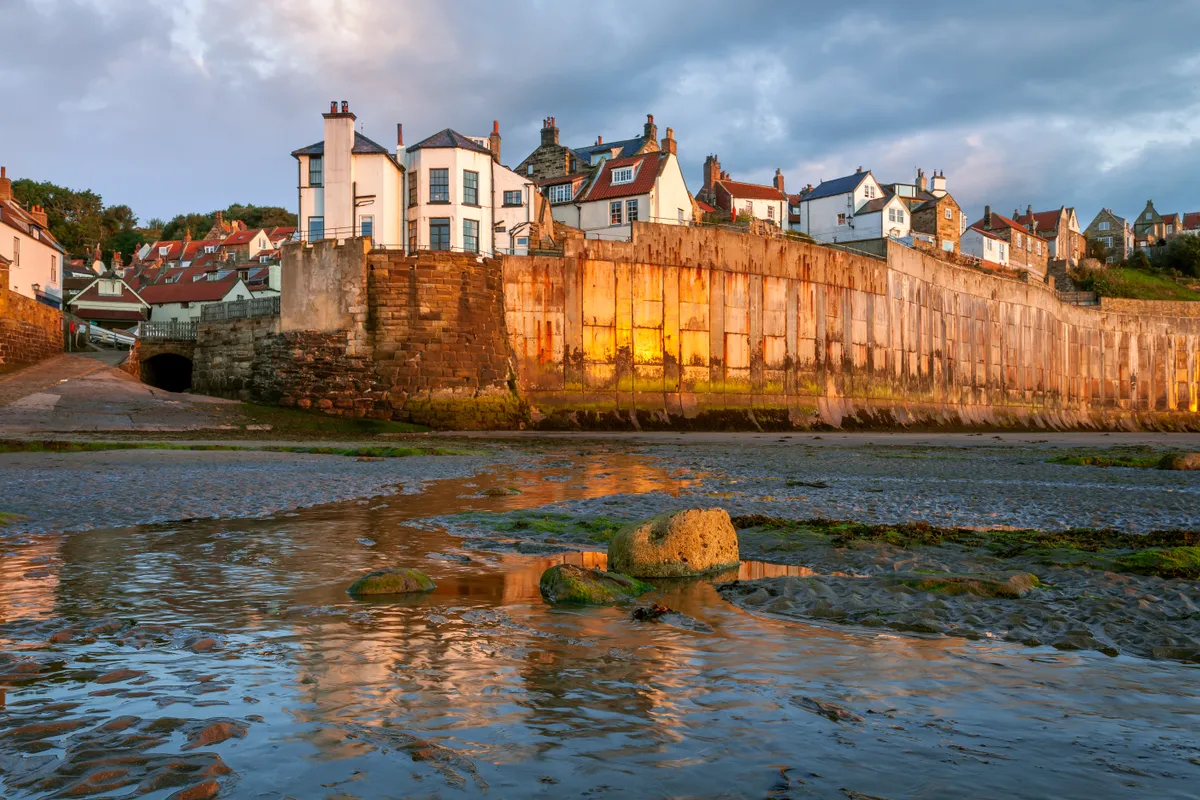
Robin Hood's Bay is a hidden bit of history, with its raw, brooding cliffs, red-roofed cottages and unusual architecture. The beach itself is one of the UK’s best spots for fossil hunting.
Perfect to visit in the winter, you can enjoy a walk along the cliffs or beach to take in the historical village and spectacular scenery and end in one of the many cosy pubs.
Durdle Door, Dorset
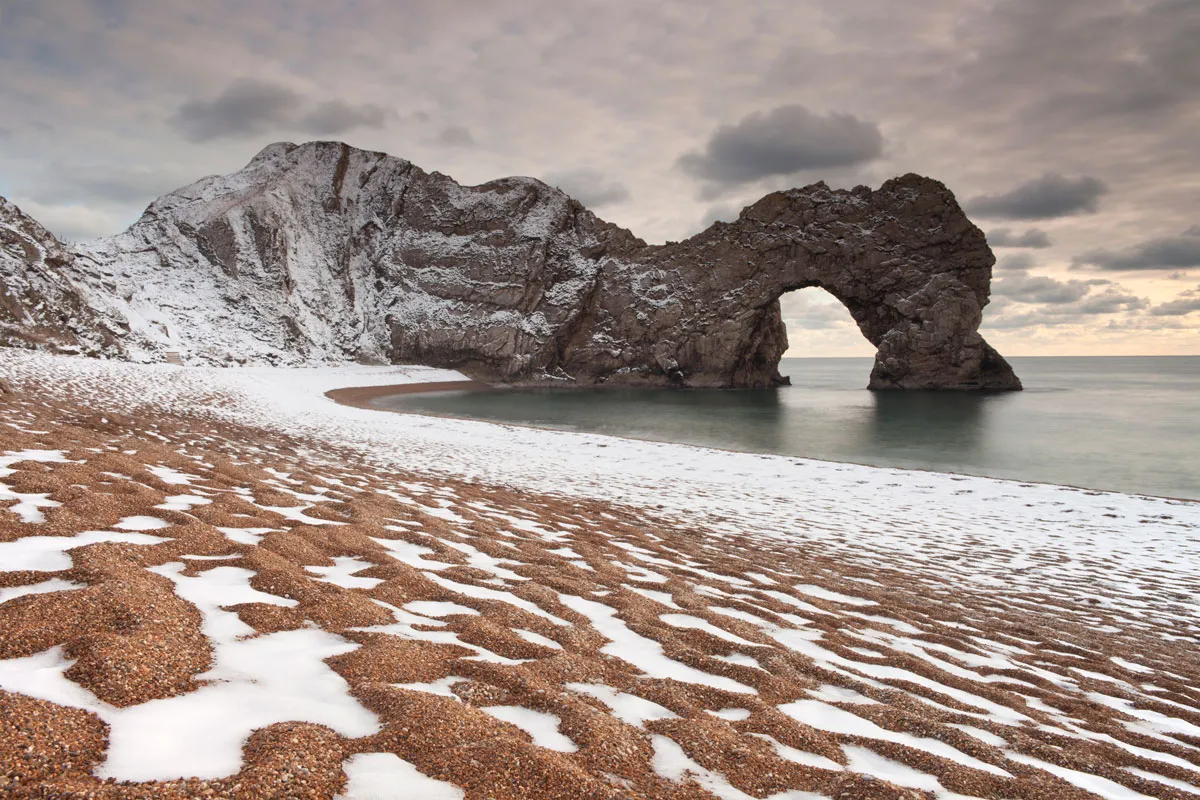
Running from Orcombe Point near Exmouth to Old Harry Rocks near Swanage, the Jurassic Coast is a wonder in the soft light of summer, but in the winter its striking, rugged beauty really shines through. With over 90 miles of coastal walks, stunning beaches and impressive cliffs, there is plenty of choice about where to go.
Wrap up warm and enjoying the coast without the crowds of the summer. Durdle Door in particular is worth a visit; try and get there early on a misty morning and watch the sunrise through the door.
Runswick Bay, North Yorkshire
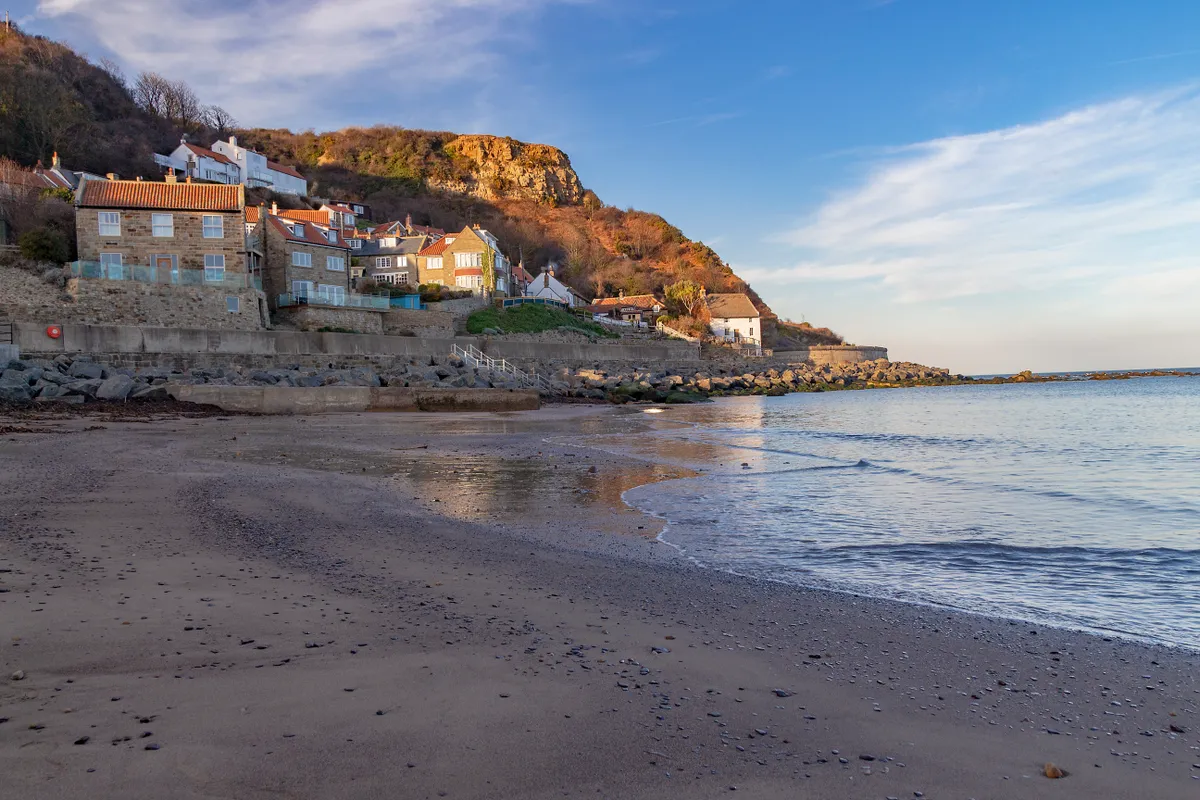
The pristine, mile-long sands of the former fishing village of Runswick Bay on the North Yorkshire coast were recently crowned “Britain’s best beach” by the Times and Sunday Times.
With its sheltered, sweeping bay, golden sands and delightful cluster of pantile red-roofed cottages tumbling down to the sea, it is a firm favourite with many families. The beach, which once provided anchorage for scores of brightly coloured fishing boats, is now more popular for rockpooling, Jurassic Age fossil-hunting and bracing coastal walks.
Walberswick, Suffolk
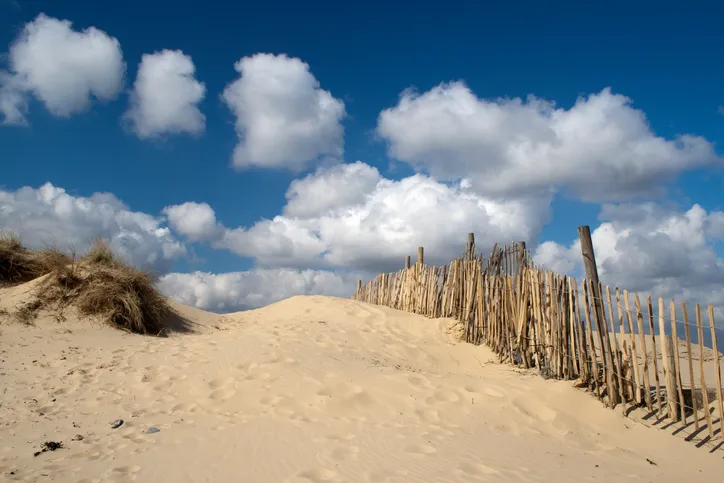
Listed as an Area of Outstanding Natural Beauty, tucked away between the mouth of the river Blythe and the Suffolk coast, Walberswick is well worth a visit this winter. It has miles of marshland, heath and coast to enjoy as well as access to the Suffolk Coast Path that stretches 50 miles along the east coast.
A bustling holiday destination in the summer, it’s relaxed and quiet during the winter, with the crumbling Pump Mill ruins and beautiful natural scenery, contrasted with a the historic trading village, there is lots to enjoy.
Embleton Bay, Northumberland
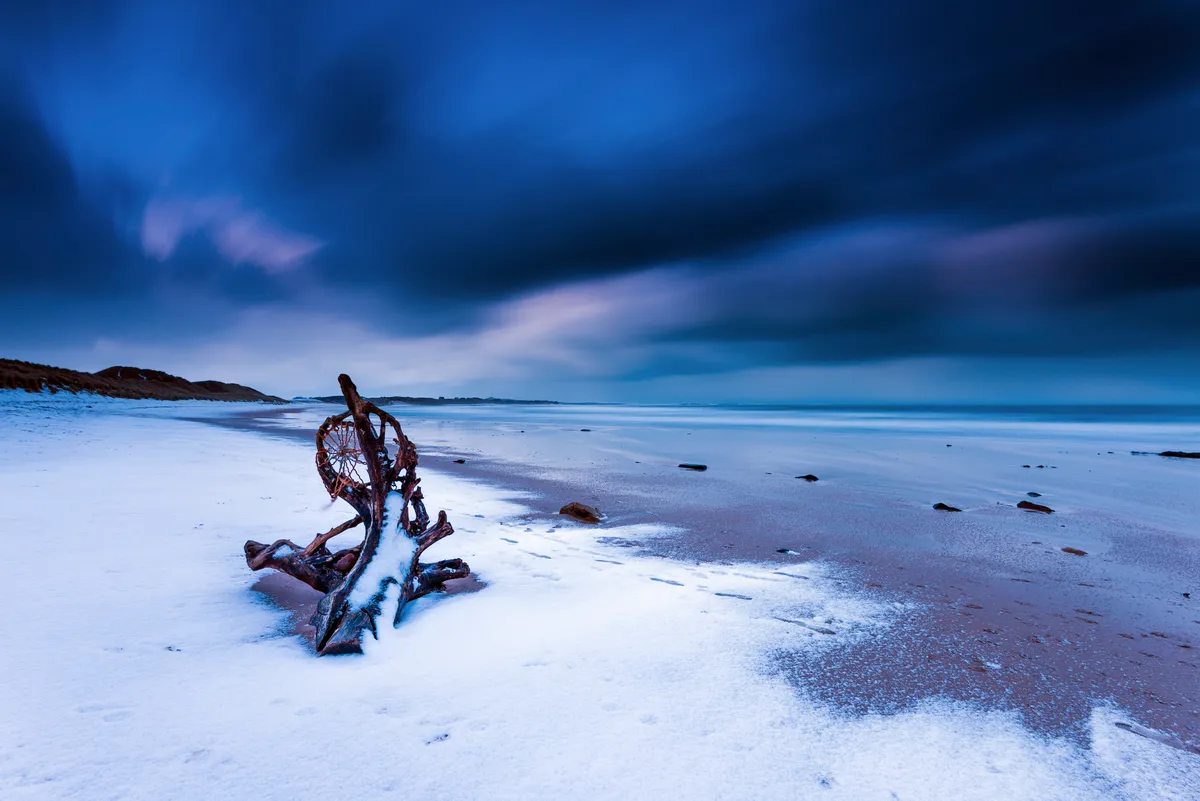
A beautiful long stretch of beach overlooked by the impressive ruins of Dunstanburgh Castle, Embleton Bay is a perfect winter beach. On a clear cold morning the ruins can be seen perfectly from the beach and beach itself backs onto dunes, famous for there flowers, grasses and birds.
Heysham, Lancashire
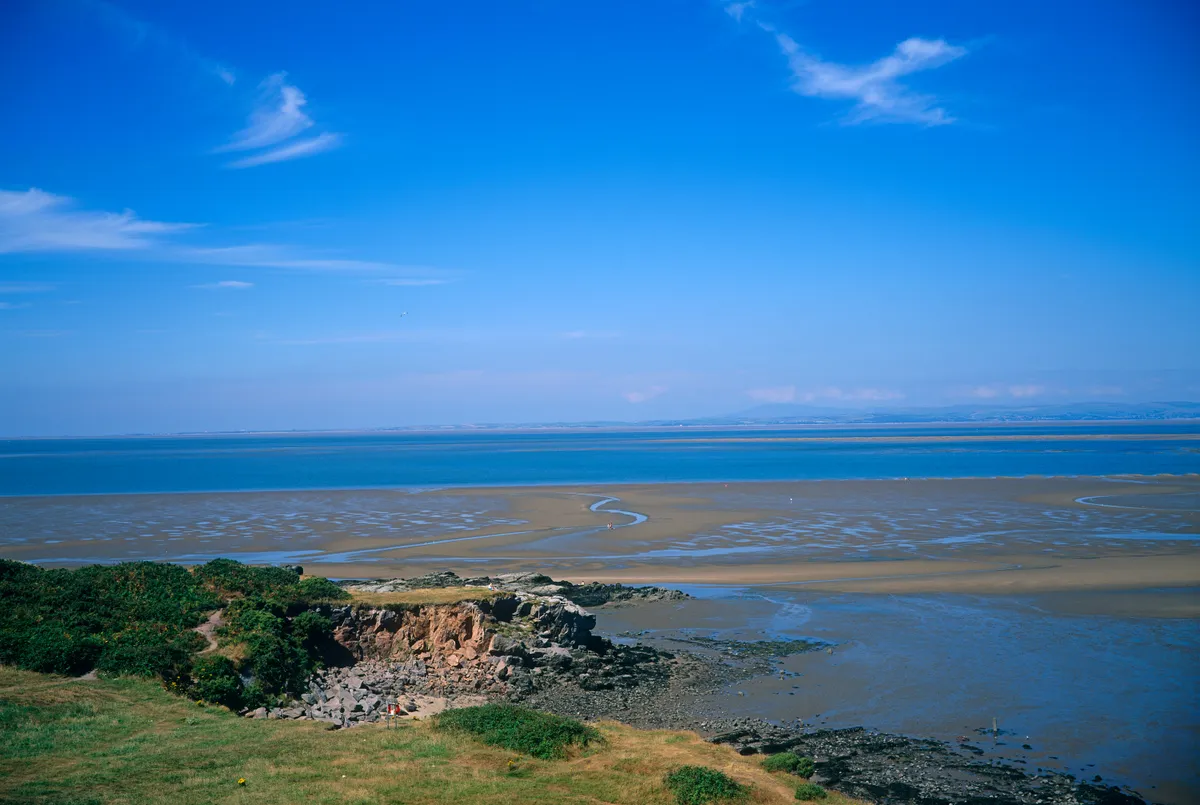
The village of Heysham has some wonderful views to enjoy this winter. The town backs directly onto the cliffs and beaches creating some beautiful contrasting scenery. The famous graves in the ruins of St Patrick's chapel are also worth a visit and look particularly spooky shrouded in a winter mist.
Charmouth, Dorset

There are few family pleasures as simple or as satisfying as finding fossils on the beach. It’s an outdoor experience perfect for children of all ages, and it continues to delight adults, too. There’s no better place to indulge a passion for fossils than the Jurassic coastline of Dorset and Devon. Now recognised as a UNESCO World Heritage Site, it’s made up of 95 miles and 185 million years of prehistoric life, gradually exposed for eventual discovery.
The Dorset village of Charmouth – the gateway to the Jurassic Coast – is pleasantly removed from the blare and glare of other seaside amusements, and is a wonderful starting point for a fossil-hunting daytrip
Best winter beaches in Scotland
Port Castle Bay, Dumfries and Galloway
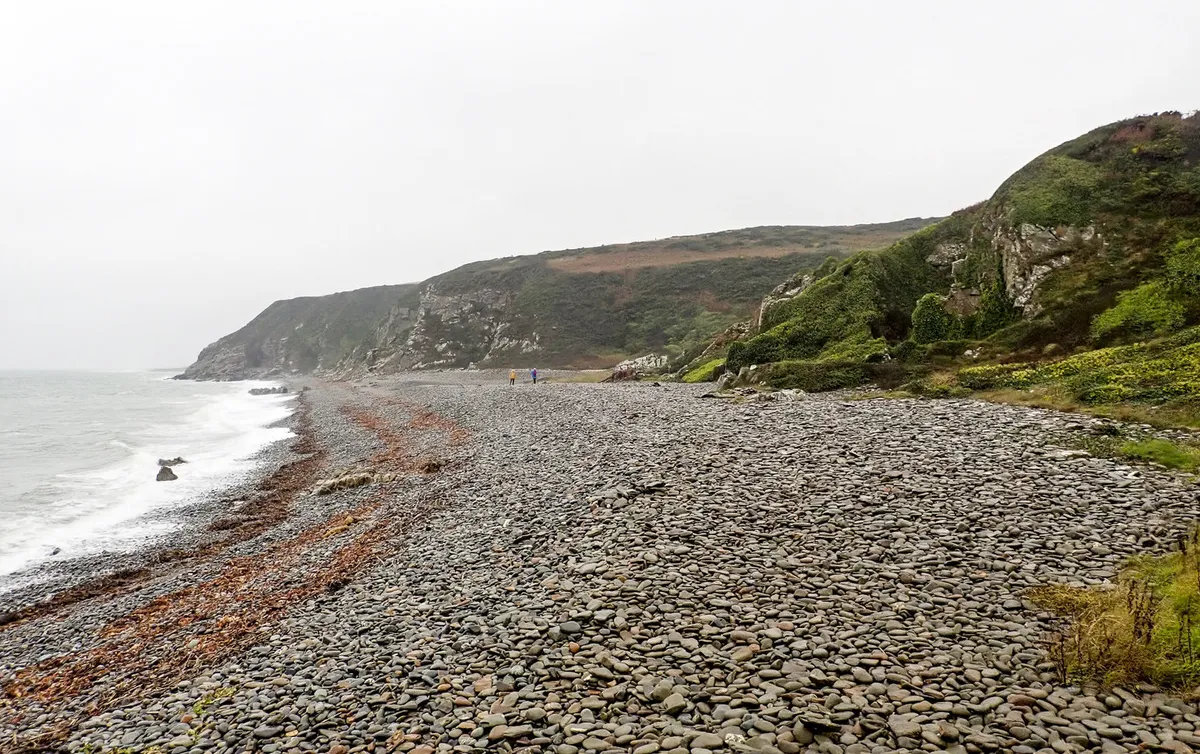
A wind-wrapped Port Castle Bay, on the south-western shores of the Machars peninsula in Dumfries and Galloway, is an ideal spot to embrace nature and follow in the footsteps of pilgrims – old and modern – to an adorned cave. To reach the secluded, stony site, drive south from Whithorn and follow the Historic Scotland road signs for St Ninian’s Cave, down a tall beech-lined avenue to a car park.
Sandwood Bay, Sutherland

Sandwood Bay is one of Britain’s most remote and beautiful beaches. Flanked by grassy dunes and buffeted by the rolling breakers of the Atlantic, the swath of white sand is a wild and wonderful place.
The only way in is on foot and the car park at Blairmore, on the narrow road between Kinlochbervie and Sheigra, is the perfect place to start.
Saligo Bay, Isle of Islay
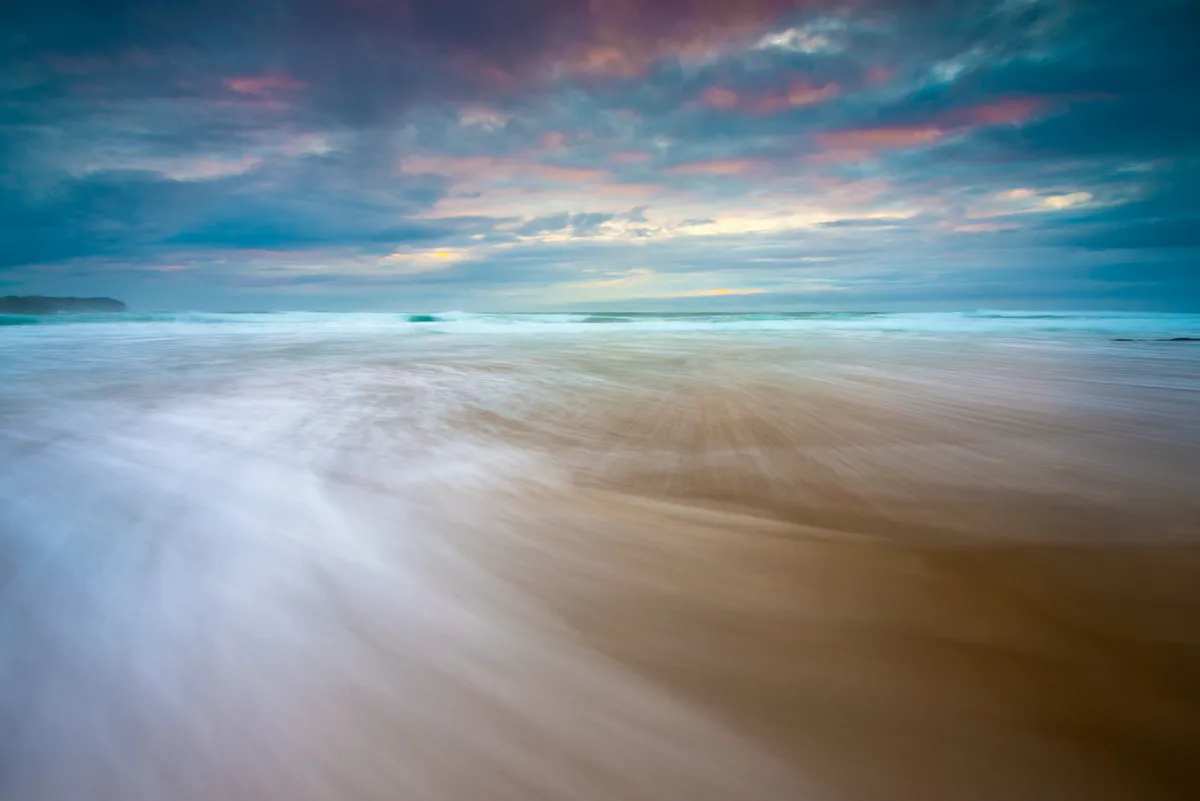
Saligo Bay can be found on Islay’s Atlantic west coast, west of Loch Gorm. Many say Saligo Bay is the island’s most beautiful bay, and offers stunning light conditions for photographers.
Pack a flask of tea and a blanket and head down to this gorgeous bay to watch an unforgettable Atlantic sunset.
Port Mora and Port Kale, Dumfries and Galloway
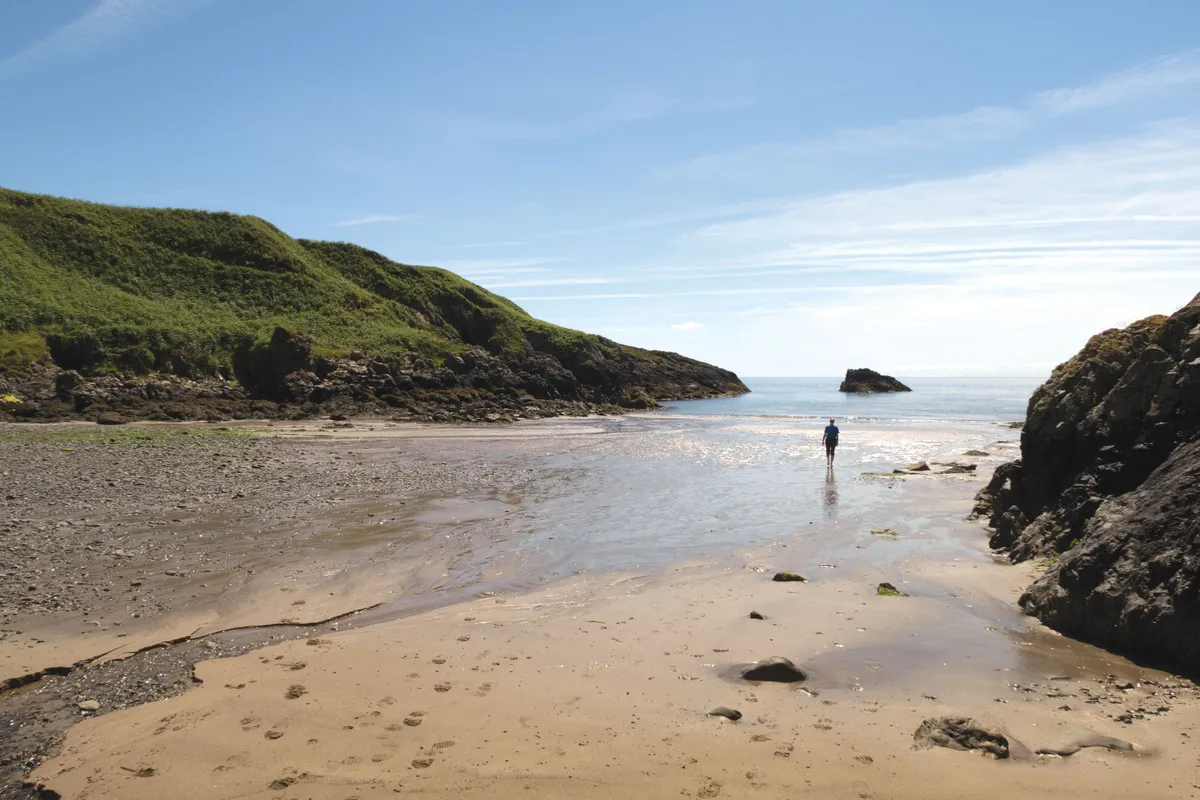
On the south-western tip of Dumfries and Galloway in southern Scotland, a series of spectacular cliffs overlooks the Irish Sea. Snuggled into this idyllic coastline, about a mile north of Portpatrick, are the twin coves of Port Mora and Port Kale.
Without vehicle access to the beaches, the only traffic you’re likely to encounter here is the distant glimpse of a ferry sailing between Cairnryan and Larne in Northern Ireland.
Achmelvich, Sutherland

The single track road heads west, navigating the valley floor between the low, tortoise-back tors of north-west Scotland.
Fissured hillsides of heather and shrub rise and fall beside the car, sinking into grassland before arriving on to the shores of Achmelvich Bay – a sweep of soft, white sand, scythe-like, sheltered between the gnarled rock of two stunted headlands.
North Berwick, East Lothian
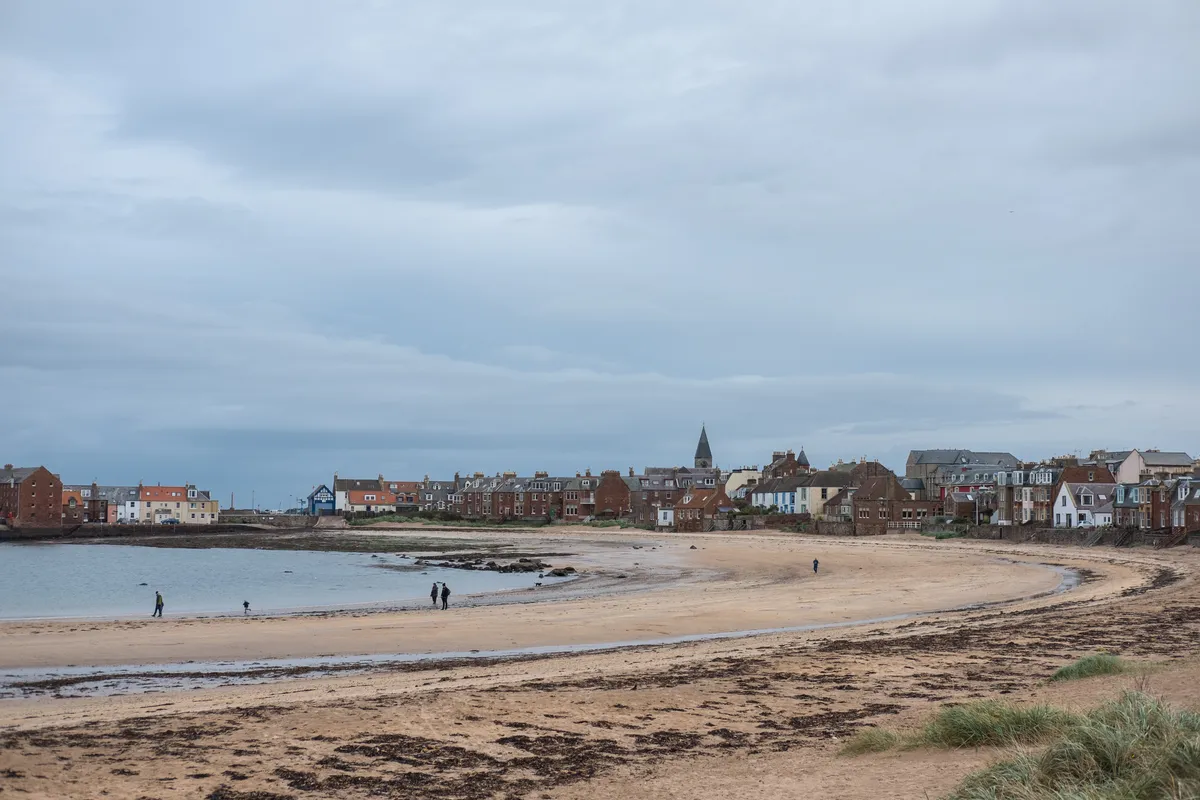
Witch trials, fierce battles and huge volcanic blasts; the town of North Berwick and its surrounding landscape has a long, fabled and fractious past. Yet in the 19th century, as the hum and smoulder of the industrial revolution largely bypassed the town, its character began to shift.
Today, the town’s Victorian past remains embedded within its charming backstreets and broad, sweeping beach. Dip sandy toes into the 1930s tidal pool and admire Beach Road’s reef of 19th-century balconies and bay windows. This town is vintage, but there is far more to it than a step into the past. Head to the Scottish Seabird Centre and learn about the local wildlife, or for those with a stomach for heights, get in touch with East of Scotland Microlights for a tour of the sky and expansive, aerial views of the island-flecked coast.
Guide to Britain's seashells
Take a closer look next time you’re walking along the seashore and you may be surprised about what you find – a pointy top shell, a colourful periwinkle or a spired whelk.
Each species in our ID guide has specific patterns and markings, and varies in shape and size, offering clues about the animals’ evolution and their day-to-day lives.
Killantringan, Dumfries and Galloway
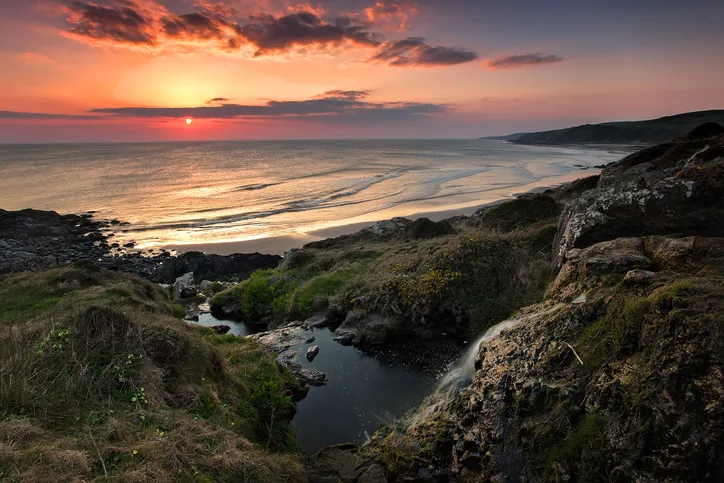
A coastal point just outside of Portpatrick, Killantringan is an impressive area of raw cliffs and rugged beaches. A lonely lighthouse position at its peak adds to the surrounding view.
With the rolling Galloway hills to one side and coast to the other, it’s a hotspot for wildlife, including golden eagles and red deer. Half a mile south there is also the Dunskey Castle ruin, a 12th century tower house.
Best winter beaches in Wales
Dunraven Bay, Vale of Glamorgan

Dunraven Bay, with its dramatic cliffs and other-worldly ribbons of limestone stretching out to sea, is one of my favourite beaches in South Wales. It never fails to boggle my brain that all of this used to be at the bottom of a warm, shallow sea near the Equator; the layers of blue lias rock (named for its grey-blue colour) were laid down when dinosaurs roamed the Earth.
Battered by the elements, this compacted history is eroding before our very eyes, making it a prime spot for the amateur fossil hunter, while those armed with nets and buckets can lose themselves among the rockpools, searching for crabs, anemones and seaweed.
Criccieth, Gwynedd

If the tide is very low (check tide tables – it comes in fast), you can walk around the promontory of Graig Ddu – riddled with sea caves – and to Criccieth along its stony beach (the Wales Coast Path takes walkers over the headland, through farmland and across the railway to Criccieth).
The seaside town has a castle, abundant charm and refreshment – the Blue China Tearoom and Cadwaladers are particularly good.
Three Cliffs Bay, Gower
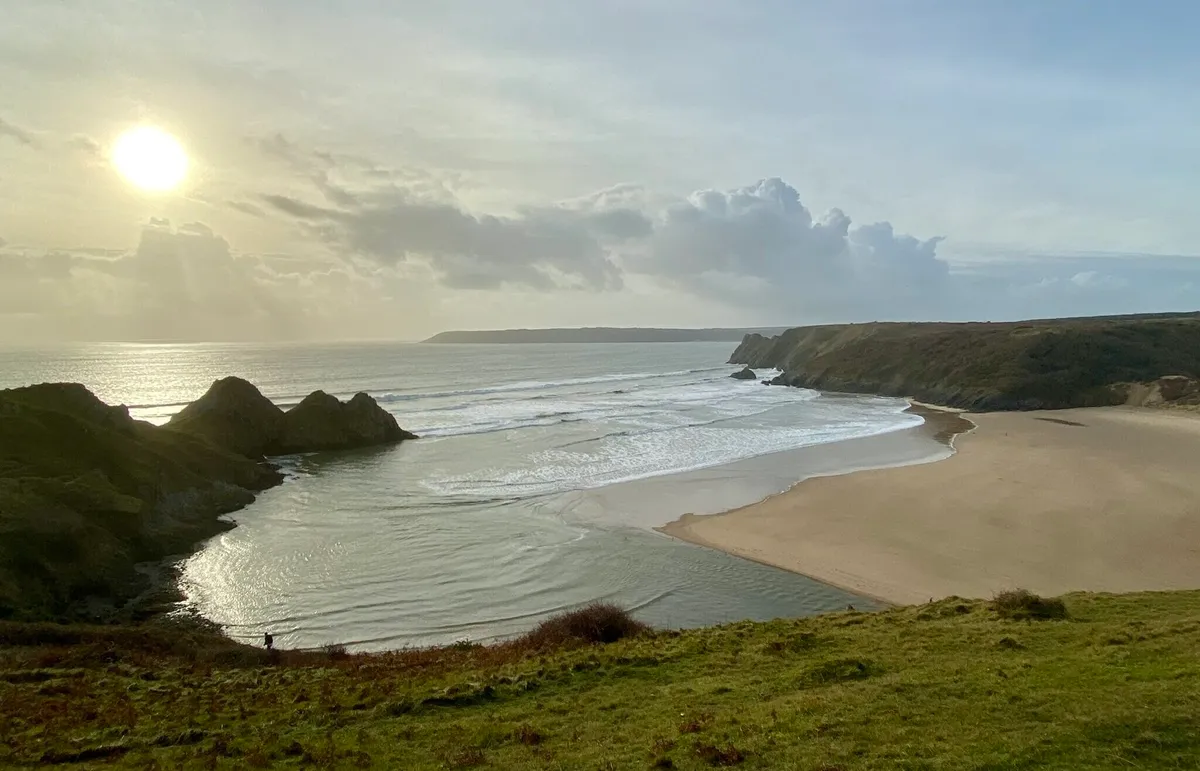
A hidden beauty throughout the year, during the winter this spot is really an isolated wonder. The sunken Three Cliffs Way is eerily quiet during the winter, with the surrounding cliffs enclosing the beach.
You can also enjoy a coastal walk up to the ruined castle to really take in the spectacular views and sounds of nothing but the nature around you.
Beachcombing guide: things to find along the seashore and best beaches in the UK
Extraordinary and beautiful treasures can be found along the British coastline. Here is our expert guide to beachcombing, including things to look out for, how to beachcomb and best beaches for beachcombing in the UK.
Traeth yr Ora, Anglesey
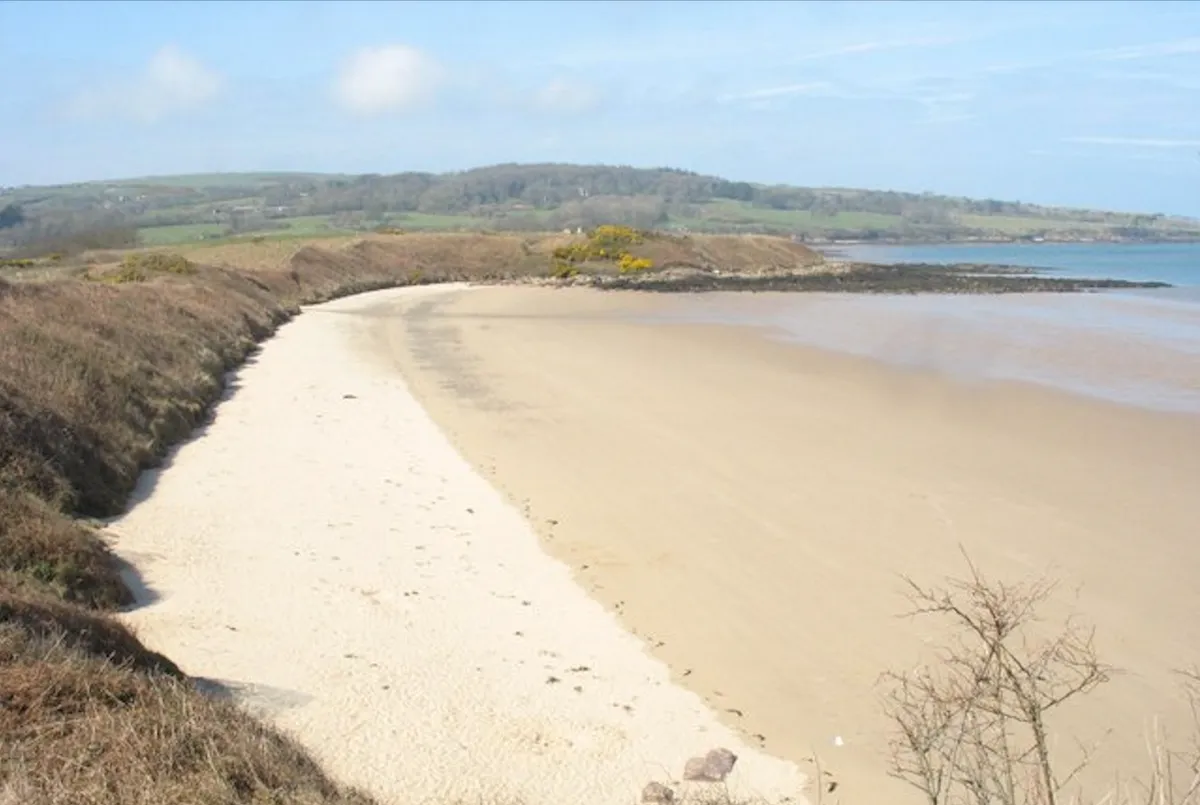
The isolated, sandy beach of Taeth yr Ora lies midway between the villages of Benllech and Amlwch on the north-east coast of Anglesey. The cove can only be accessed by foot or boat, meaning few people venture to this remote spot, especially in winter.
Explore the island of Anglesey on a three-mile easy walk across a remote stretch of Anglesey's north coastline. Look out for seals, porpoises and bottlenose dolphins as you stroll through Anglesey's Area of Outstanding Natural Beauty.
Whitesands Beach, Pembrokeshire

This dramatic headland northwest of St David’s and Whitesands beach is spectacular for sea views and coastal walks. In winter, the sea churns up some beautiful surf and crashing waves that are mesmerizing to watch.
Britain’s best coastal caves, arches and stacks
Along the British coastline you will find a range of dramatic rock formations which range from hidden caves, arches and stacks. Our guide to the most spectacular coastal caves, arches and stacks along the British coast.
Merthyr Mawr National Nature Reserve, Glamorgan
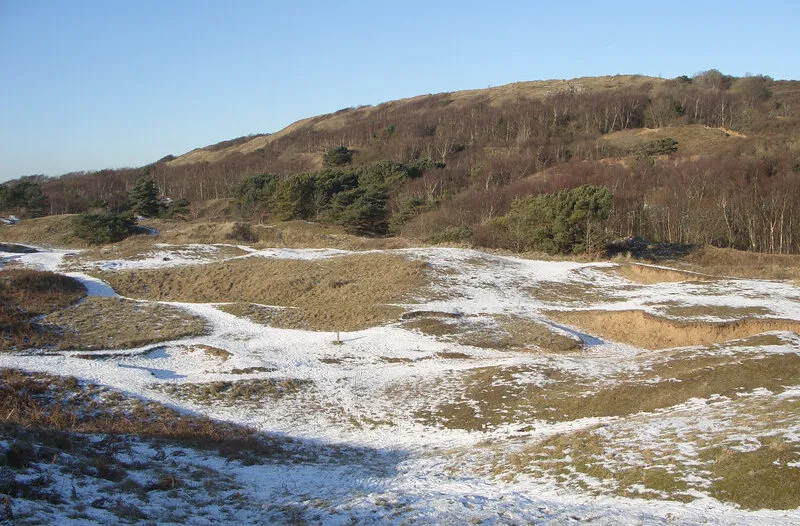
You don’t need a stomach for roller-coasters to take on Merthyr Mawr’s ‘big dipper’ – the second highest sand dune in Europe.
A Carboniferous limestone ridge covered with sand, this huge dune’s steep sides tower over Merthyr Mawr Warren National Nature Reserve’s unique wildlife-rich landscape, where rich, soft colours of moss and marram grass blend into sultry butterscotch sands.
Best winter beaches in Northern Ireland
Murlough National Nature Reserve, County Down
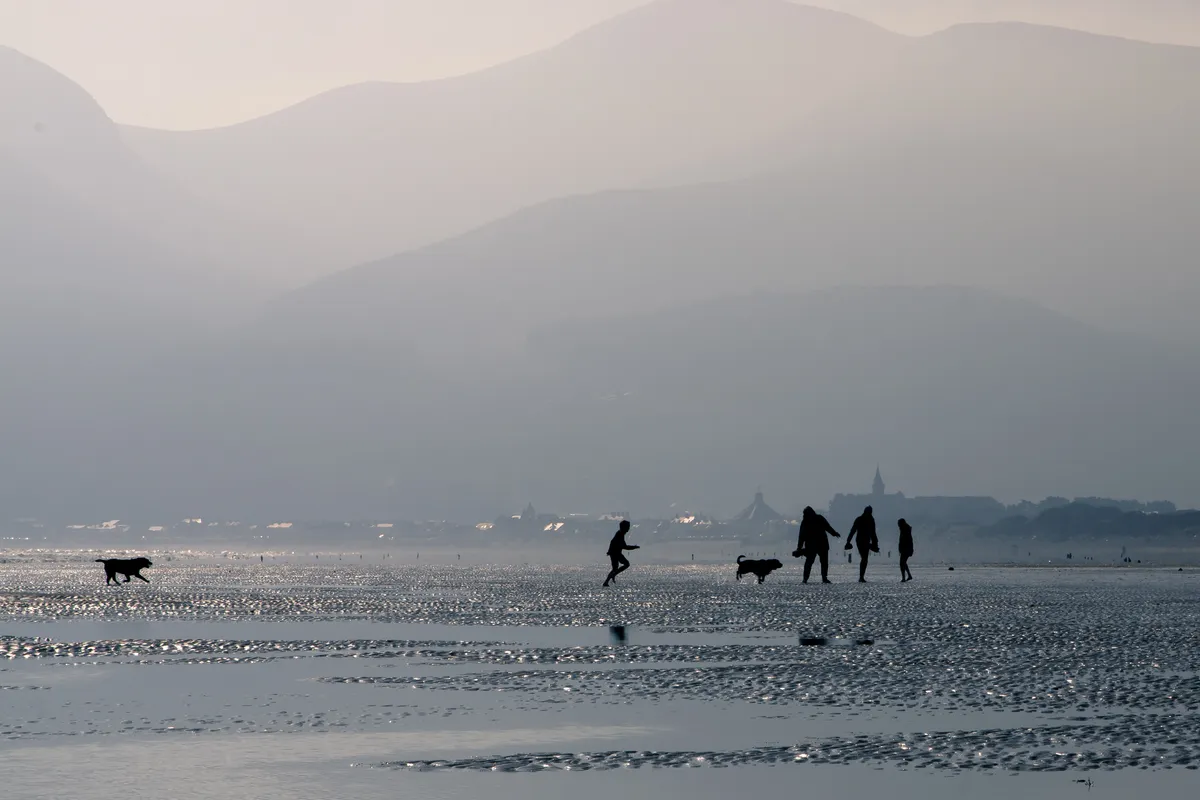
Situated 3.5 miles north-east of the coastal town of Newcastle in County Down, Murlough National Nature Reserve is a wildlife-watchers’ dream, even in winter.
Its range of habitats play host to a vast diversity of flora and fauna, and the long, sandy beach is the focal point of a fantastic walk, overlooked by the iconic Mourne Mountains.
Downhill/Benone beach, County Derry
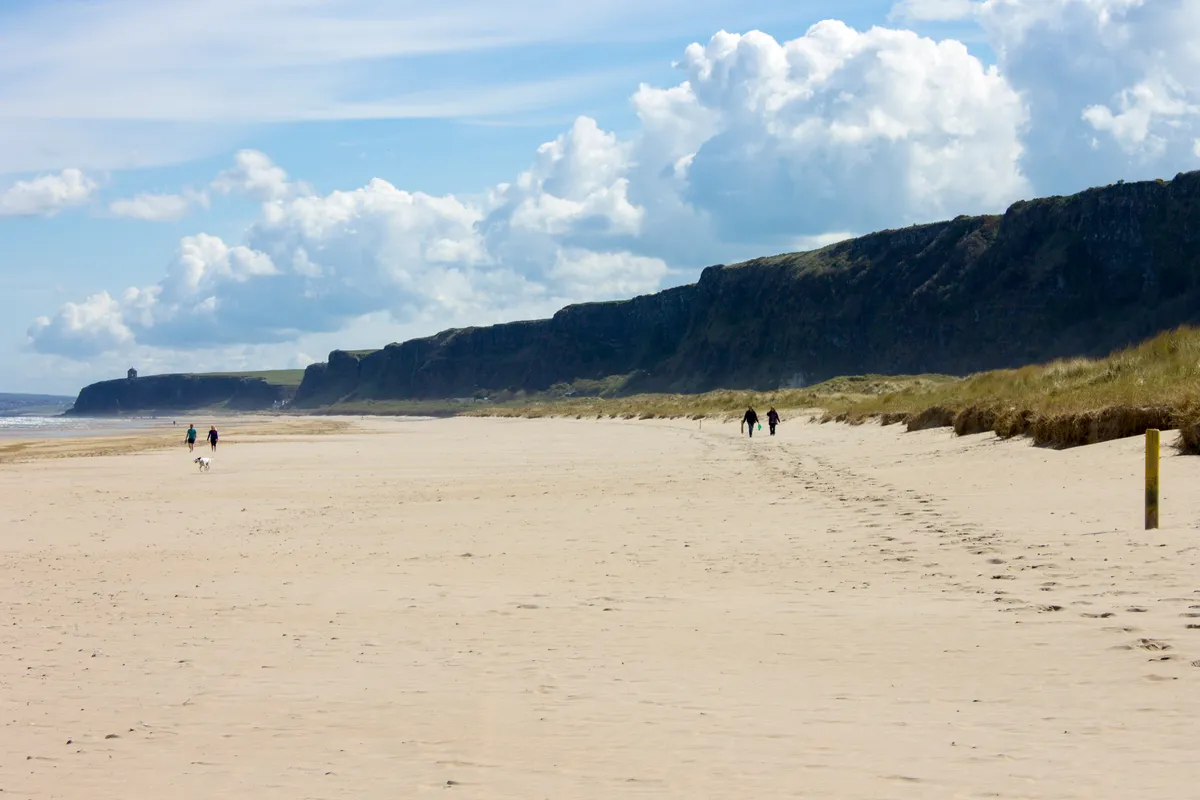
Downhill and Benone beaches stretch seven glorious miles to Magilligan Point. Here, the wind throws the body off-kilter, stings the lips with its spume-blown salt and fills the ears with the roar of the Atlantic. With waves reaching upwards of five and six feet, it’s a place to surf or walk, not sunbathe.
Dundrum Bay, County Down
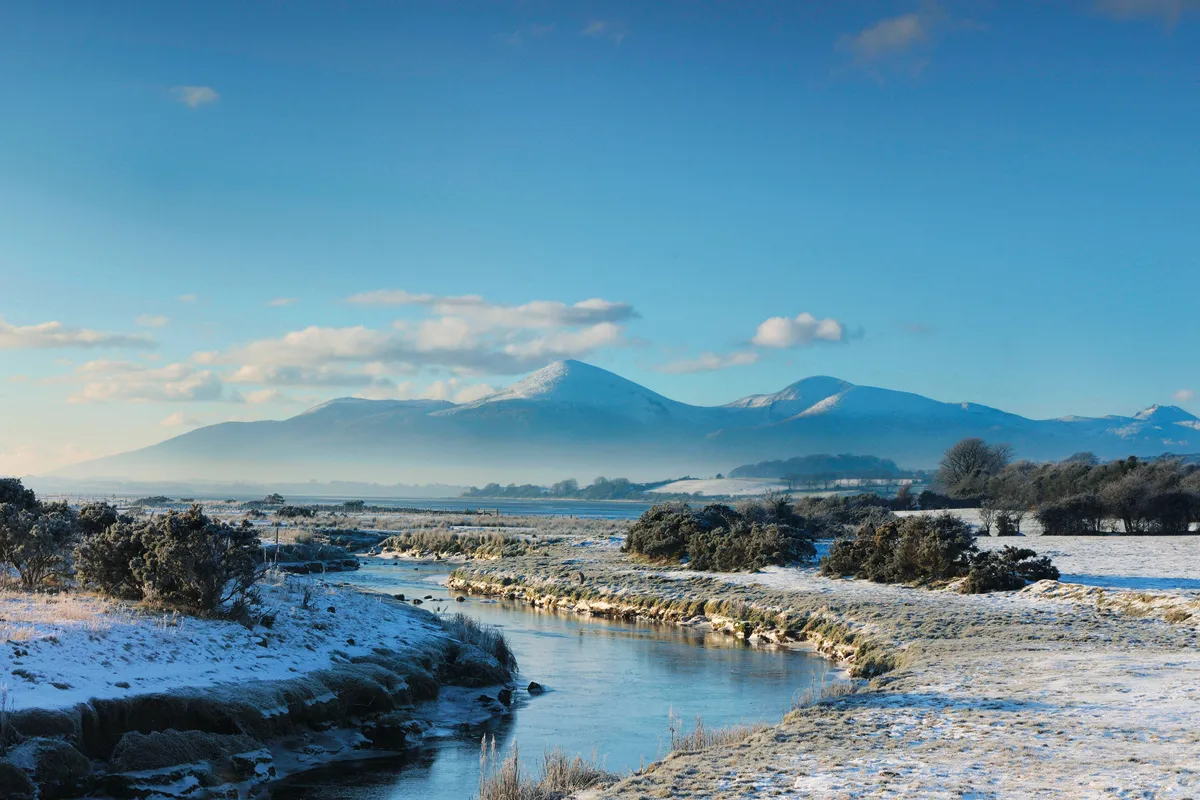
Dundrum Bay is a nature lover’s haven in the colder months of the year when the Inner Bay teems with overwintering birds. This coastal walk begins on the edge of the Inner Bay at Dundrum, one of the county’s loveliest villages, set below a magnificent Norman castle ruin.
Cushendall and Cushendun, County Antrim
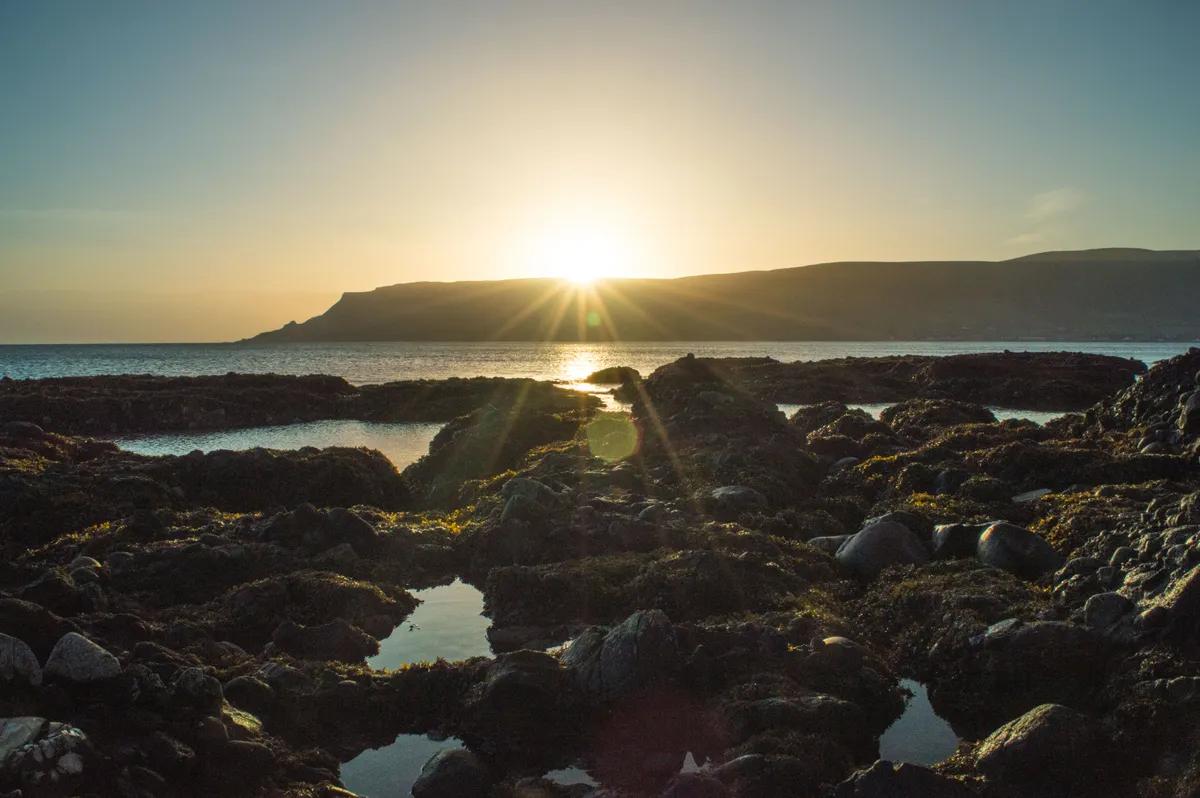
Cushendall's ancient tower once served as “a place of confinement for idlers and rioters”, and Cushendun, near which there is a large boulder snared in the roots of an ancient tree with a small altar beside it. Roman Catholics would furtively worship at this Mass Rock when the penal laws banned them from practising their religion in the early 18th century. A local priest still conducts a service there each summer.
Cushendun’s sea caves made waves as the ominous Stormlands in Game of Thrones but despite the fanfare, these ancient red sandstone caves remain down to earth. Visit in winter for added atmosphere.

